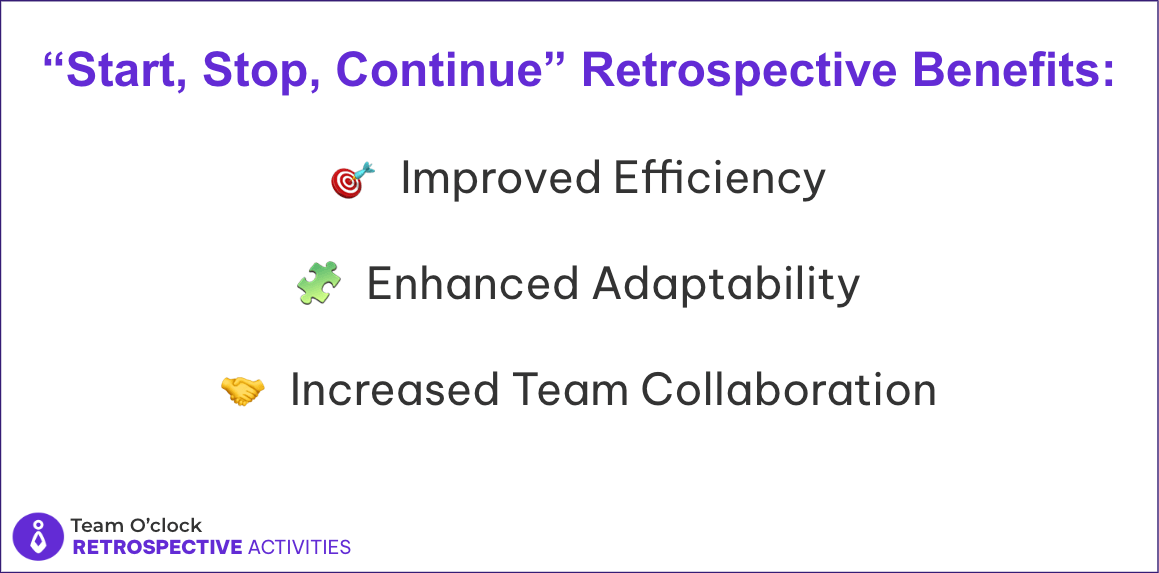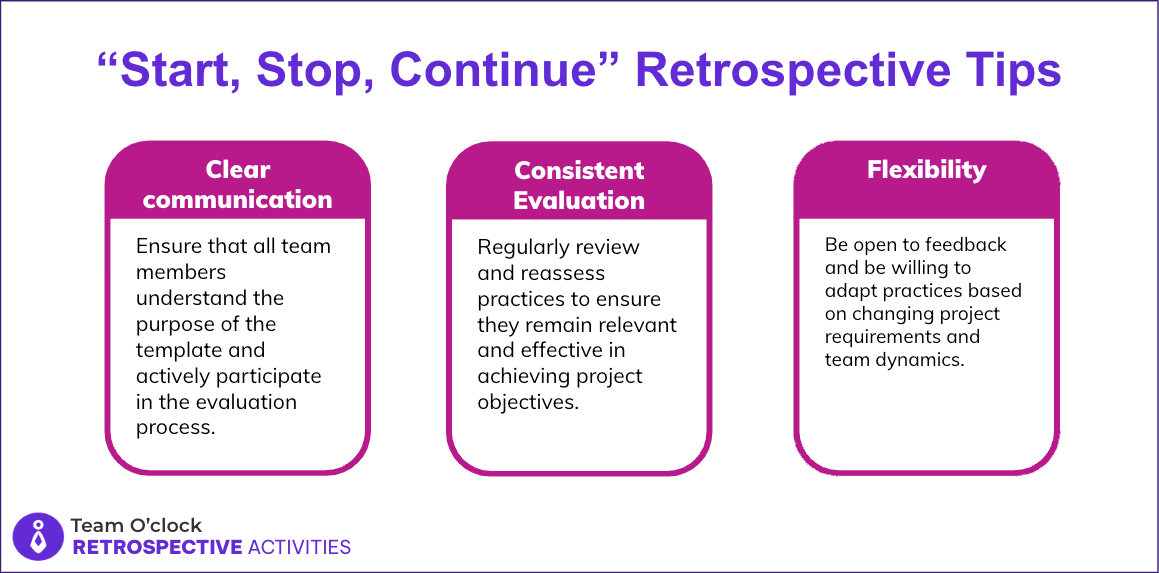
Use the Popular 'Start, Stop, Continue' Activity for Agile Success

Agile methodology has transformed project management, offering flexibility, adaptability, and project delivery efficiency. One of the most effective tools within Agile is the 'Start, Stop, Continue' template, which enables teams to evaluate their practices and make informed decisions to enhance performance.
In this article, you will discover how this activity works and the challenges you and your team may face. Ultimately, you will explore how it can be effectively implemented for your Agile success.
Understanding the 'Start, Stop, Continue' Method
What is it and How Does it Work?
The 'Start, Stop, Continue' method is a simple yet powerful activity template used in Agile project management to assess current practices and determine what actions to take moving forward. It involves three key steps: identifying practices to start, stop, and continue within the project or team.
How it Works
Teams thoroughly evaluate their current practices, identifying what aspects are working well and should be continued, what practices are hindering progress and should be stopped, and what new practices should be initiated to improve efficiency and outcomes.
Implementing the 'Start, Stop, Continue' Activity
Step 1: Identify Current Practices
Begin by conducting a comprehensive analysis of the current practices within the project or team. This may involve reviewing processes, methodologies, communication channels, and collaboration tools.
Step 2: Determine What to Start
Identify areas where new practices or processes could enhance performance. This may include adopting new technologies, implementing additional training programs, or introducing innovative collaboration methods.
Step 3: Determine What to Stop
Identify practices that are no longer effective or relevant to the project's objectives. This could include outdated processes, redundant meetings, or unnecessary documentation requirements.
Step 4: Determine What to Continue
Acknowledge and reinforce practices that have proven successful and beneficial to the project. This could include effective communication strategies, streamlined workflows, or successful team collaborations.
Benefits of the 'Start, Stop, Continue' Retrospective

Implementing the 'Start, Stop, Continue' template offers several benefits for Agile teams, such as:
1. Improved Efficiency
By evaluating and optimizing practices, teams can streamline workflows, reduce waste, and improve overall efficiency in project delivery.
2. Enhanced Adaptability
The activity encourages teams to embrace change and adapt to evolving project requirements, enhancing their ability to respond effectively to challenges and opportunities.
3. Increased Team Collaboration
By fostering open communication and collaboration, the template encourages teamwork and empowers team members to contribute ideas and suggestions for improvement.
Challenges and Considerations
While the 'Start, Stop, Continue' activity offers numerous benefits, it also presents challenges that teams must address. Here are a few you need to keep in mind:
1. Resistance to Change
Some team members may resist implementing new practices or abandoning old ones, leading to resistance and reluctance to embrace change.
2. Cultural Adaptation
The activity may require a cultural shift within the organization, necessitating clear communication and leadership support to ensure successful implementation.
3. Communication Issues
Effective communication is essential for the successful implementation of the template, and teams must address any communication barriers or misunderstandings that may arise.
Tips for Effective Implementation

Consider the following tips to ensure the successful implementation of the 'Start, Stop, Continue' activity:
1. Clear Communication
Ensure that all team members understand the purpose of the template and actively participate in the evaluation process.
2. Consistent Evaluation
Regularly review and reassess practices to ensure they remain relevant and effective in achieving project objectives.
3. Flexibility
Be open to feedback and be willing to adapt practices based on changing project requirements and team dynamics.
How to Run a Start, Stop, Continue Retrospective with Team O'Clock
Running a "Start, Stop, Continue" retrospective with Team O'Clock is streamlined and effective, especially considering its popularity among teams. As a good starting point for agile teams new to retrospectives, it sets a clear framework for reflection and improvement.
Encouraging openness among participants is vital, ensuring that everyone feels comfortable sharing their insights and suggestions. It's also essential to emphasize that the notes added during the retrospective are not personal but rather contribute to the collective responsibility of the team.
Given its widespread adoption among Team O'Clock teams, this activity is a trusted method for facilitating productive retrospectives. For more insights and tips on running effective retrospectives with Team O'Clock, check out our Retrospective Ideas on our website.
Conclusion
The 'Start, Stop, Continue' retrospective is a valuable tool for Agile teams seeking to enhance their performance and achieve success in project delivery. By systematically evaluating current practices and making informed decisions about what to start, stop, and continue, teams can optimize efficiency, foster collaboration, and adapt to changing project requirements.
FAQs
Q1. What is the 'Start, Stop, Continue' template?
The 'Start, Stop, Continue' template is used in Agile project management to evaluate current practices and determine what actions to take moving forward.
Q2. Can the activity be applied to any project?
Yes, the 'Start, Stop, Continue' activity can be applied to various projects and teams, regardless of size or industry.
Q3. How often should teams conduct evaluations using the activity?
Evaluations should be conducted regularly to ensure that practices remain relevant and effective in achieving project objectives.

Elevate your Agile practices with Team O'Clock's 'Start, Stop, Continue' retrospectives. Sign up for a free trial today to enhance continuous improvement and team success!







